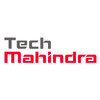
i
Wipro
Filter interviews by
Wipro Java Developer Interview Questions and Answers
47 Interview questions
Kafka is a distributed event streaming platform used for building real-time data pipelines and streaming applications.
Publish-Subscribe Model: Kafka allows producers to publish messages to topics and consumers to subscribe to those topics, enabling decoupled communication.
Scalability: Kafka is designed to handle large volumes of data and can scale horizontally by adding more brokers to the cluster.
Durability: Mess...
Swap two numbers without using a third variable in Java
Use XOR operation to swap two numbers without using a third variable
Example: int a = 5, b = 10; a = a ^ b; b = a ^ b; a = a ^ b; // Now a=10, b=5
Accessing AWS S3 from ECS involves IAM roles, SDKs, and proper configuration for secure data handling.
Use IAM roles for ECS tasks to grant permissions to access S3.
Configure the ECS task definition to include the IAM role.
Utilize AWS SDKs (like AWS SDK for Java) to interact with S3.
Example: Use S3Client to upload files: S3Client.putObject(bucketName, key, file);
Ensure network configurations (VPC, security groups) ...
Java is a high-level programming language known for its portability, security, and versatility.
Java is platform-independent, meaning it can run on any device with a Java Virtual Machine (JVM).
It is object-oriented, allowing for modular and reusable code.
Java is widely used in web development, mobile applications, enterprise software, and more.
Its strong security features make it a popular choice for building secur...
What people are saying about Wipro





Platform independence language refers to a programming language that can run on any platform without needing to be recompiled.
Java is a platform independence language because it uses the Java Virtual Machine (JVM) to run on any platform.
Platform independence allows Java programs to be written once and run anywhere, saving time and effort for developers.
Other examples of platform independence languages include Pyth...
Threads are lightweight processes that enable concurrent execution in Java, allowing multiple tasks to run simultaneously.
Threads share the same memory space, making communication between them easier.
Java provides the Thread class and Runnable interface to create threads.
Example: Implementing Runnable to define a task and using Thread to execute it.
Threads can be in various states: NEW, RUNNABLE, BLOCKED, WAITING,...
Primary key uniquely identifies each record in a table, while unique key ensures that all values in a column are different.
Primary key does not allow NULL values, while unique key allows one NULL value.
A table can have only one primary key, but multiple unique keys.
Primary key is automatically indexed, while unique key is not.
Example: Primary key for a table of students could be student_id, while unique key could ...
Spring MVC Flow involves DispatcherServlet, HandlerMapping, Controller, Model, ViewResolver, and View.
Client sends a request to DispatcherServlet.
DispatcherServlet consults HandlerMapping to determine the appropriate Controller.
Controller processes the request, interacts with Model, and returns a logical view name.
DispatcherServlet consults ViewResolver to map the logical view name to an actual View.
View renders t...
Custom exceptions in Java allow developers to create specific error handling tailored to their application's needs.
Define a custom exception by extending the Exception class: `public class MyCustomException extends Exception {}`
Use constructors to pass error messages: `public MyCustomException(String message) { super(message); }`
Throw the custom exception using the `throw` keyword: `throw new MyCustomException("Er...
Spring container is responsible for managing the lifecycle of Spring beans and their dependencies.
Spring container creates and manages the objects (beans) defined in the Spring configuration file.
It injects dependencies, handles transactions, and manages the lifecycle of beans.
There are two types of Spring containers: BeanFactory and ApplicationContext.
ApplicationContext is preferred over BeanFactory as it provide...
Wipro Java Developer Interview Experiences
44 interviews found
I appeared for an interview in Jun 2025, where I was asked the following questions.
- Q1. What is Java?
- Q2. Sample program ?
- Q3. What is compler
- Q4. Inheritance types
- Q5. What is java thread
(2 Questions)
- Q1. Previous projects
- Q2. Spring boot annotations
(2 Questions)
- Q1. Coding round swap two numbers without using third variable
- Ans.
Swap two numbers without using a third variable in Java
Use XOR operation to swap two numbers without using a third variable
Example: int a = 5, b = 10; a = a ^ b; b = a ^ b; a = a ^ b; // Now a=10, b=5
- Q2. Salary expectations
I applied via Naukri.com
(2 Questions)
- Q1. Circuit breaker pattern
- Q2. Aws S3 access via ECS
- Ans.
Accessing AWS S3 from ECS involves IAM roles, SDKs, and proper configuration for secure data handling.
Use IAM roles for ECS tasks to grant permissions to access S3.
Configure the ECS task definition to include the IAM role.
Utilize AWS SDKs (like AWS SDK for Java) to interact with S3.
Example: Use S3Client to upload files: S3Client.putObject(bucketName, key, file);
Ensure network configurations (VPC, security groups) allow...
(2 Questions)
- Q1. Time Complexity
- Q2. Coding question and SQL queries
I appeared for an interview in May 2025, where I was asked the following questions.
- Q1. Java programming language
- Q2. Adavanced data structure
Interview Preparation Tips
I applied via Naukri.com and was interviewed in Jul 2024. There was 1 interview round.
(3 Questions)
- Q1. What is java and why its imp
- Ans.
Java is a high-level programming language known for its portability, security, and versatility.
Java is platform-independent, meaning it can run on any device with a Java Virtual Machine (JVM).
It is object-oriented, allowing for modular and reusable code.
Java is widely used in web development, mobile applications, enterprise software, and more.
Its strong security features make it a popular choice for building secure app...
- Q2. What is javascript and c++ and why its imp
- Ans.
JavaScript and C++ are programming languages used for web development and system programming respectively.
JavaScript is a scripting language used for front-end web development.
C++ is a high-level programming language used for system programming and software development.
JavaScript is essential for creating interactive web pages and dynamic content.
C++ is important for developing high-performance applications and operati...
- Q3. What is platform independence language
Skills evaluated in this interview
I applied via Naukri.com and was interviewed in May 2024. There was 1 interview round.
(6 Questions)
- Q1. Pillars of OOPS.
- Ans.
Pillars of OOPS are Inheritance, Encapsulation, Abstraction, and Polymorphism.
Inheritance: Allows a class to inherit properties and behavior from another class.
Encapsulation: Bundling data and methods that operate on the data into a single unit.
Abstraction: Hiding the complex implementation details and showing only the necessary features.
Polymorphism: Ability of a method to do different things based on the object it is...
- Q2. Exception Vs Error
- Ans.
Exceptions are events that can be handled programmatically, while errors are typically unrecoverable issues.
Exceptions are checked at compile time, while errors are unchecked.
Exceptions are subclasses of Throwable, while errors are subclasses of Error.
Examples of exceptions include NullPointerException, ArrayIndexOutOfBoundsException, while examples of errors include OutOfMemoryError, StackOverflowError.
- Q3. Custom exception
- Ans.
Custom exceptions in Java allow developers to create specific error handling tailored to their application's needs.
Define a custom exception by extending the Exception class: `public class MyCustomException extends Exception {}`
Use constructors to pass error messages: `public MyCustomException(String message) { super(message); }`
Throw the custom exception using the `throw` keyword: `throw new MyCustomException("Error o...
- Q4. Structure of JVM
- Ans.
JVM is the virtual machine that runs Java bytecode, providing platform independence.
JVM stands for Java Virtual Machine
It is responsible for interpreting Java bytecode and executing it on the underlying hardware
JVM has components like Class Loader, Bytecode Verifier, Interpreter, Just-In-Time Compiler, and Garbage Collector
- Q5. Annoatation of Spring REST
- Ans.
Spring REST annotations are used to simplify the development of RESTful web services in Spring framework.
Annotations like @RestController, @RequestMapping, @GetMapping, @PostMapping, @PutMapping, @DeleteMapping are commonly used in Spring REST.
These annotations help in mapping HTTP requests to specific handler methods, defining request mappings, and handling request parameters.
For example, @GetMapping("/users") will ma...
- Q6. Complete Spring MVC Flow .
Interview Preparation Tips
- Core Java
- Spring Mvc
- Spring Boot
- Restful
- Spring Rest
- OOPS
Skills evaluated in this interview
It was Quite good and simple
(2 Questions)
- Q1. Difference between primary and unique key
- Q2. What are Threads?
Skills evaluated in this interview
I appeared for an interview in Mar 2025, where I was asked the following questions.
- Q1. Explain your project, explain microservice you have been used in service
- Ans.
In my project, I developed a microservice architecture for an e-commerce platform, enhancing scalability and maintainability.
Service Decomposition: The application was divided into multiple microservices, such as User Service, Product Service, and Order Service, each handling specific functionalities.
API Gateway: An API Gateway was implemented to manage requests and route them to the appropriate microservices, simplify...
- Q2. What is kafka.
I applied via Company Website and was interviewed in Jul 2024. There was 1 interview round.
(2 Questions)
- Q1. Oops concept and collections
- Q2. MySql and springBoot
Interview Preparation Tips
- Q1. Core Java Concepts
- Q2. Spring Concepts
Wipro Interview FAQs
The duration of Wipro Java Developer interview process can vary, but typically it takes about less than 2 weeks to complete.
Tell us how to improve this page.
Wipro Interviews By Designations
- Wipro Project Engineer Interview Questions
- Wipro Software Engineer Interview Questions
- Wipro Software Developer Interview Questions
- Wipro Associate Interview Questions
- Wipro Senior Software Engineer Interview Questions
- Wipro Technical Lead Interview Questions
- Wipro Senior Associate Interview Questions
- Wipro Process Associate Interview Questions
- Show more
Interview Questions for Popular Designations
Overall Interview Experience Rating
based on 45 interview experiences
Difficulty level
Duration
Java Developer Interview Questions from Similar Companies
Wipro Java Developer Reviews and Ratings
based on 148 reviews
Rating in categories
|
Project Engineer
33.3k
salaries
| ₹3.2 L/yr - ₹7.3 L/yr |
|
Senior Software Engineer
23.2k
salaries
| ₹6.2 L/yr - ₹19 L/yr |
|
Senior Associate
21.9k
salaries
| ₹1.8 L/yr - ₹5.5 L/yr |
|
Technical Lead
20.2k
salaries
| ₹16.6 L/yr - ₹30 L/yr |
|
Senior Project Engineer
18.6k
salaries
| ₹6.4 L/yr - ₹18.4 L/yr |

TCS

Infosys

Tesla

Amazon
- Home >
- Interviews >
- Wipro Interview Questions
















